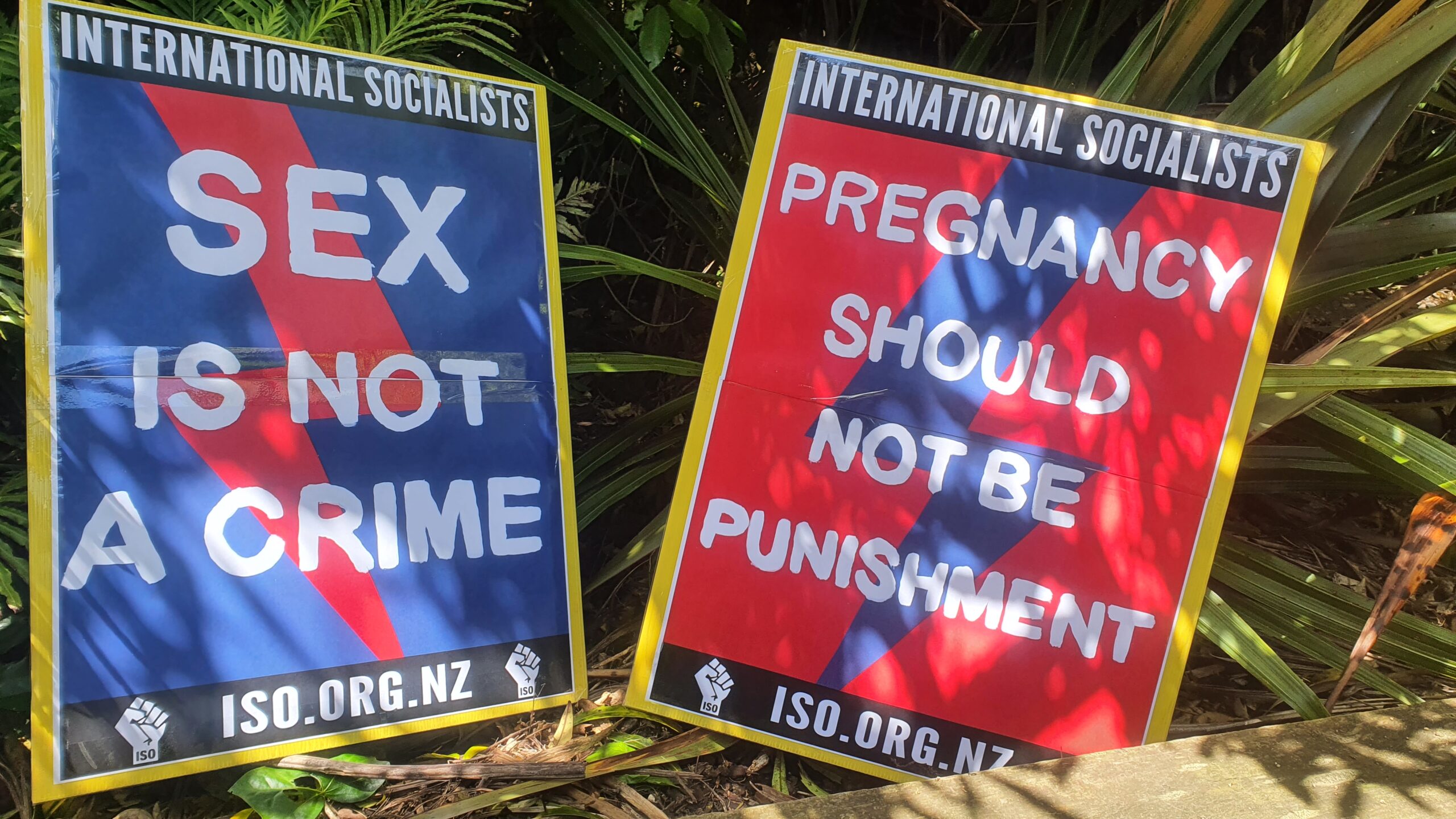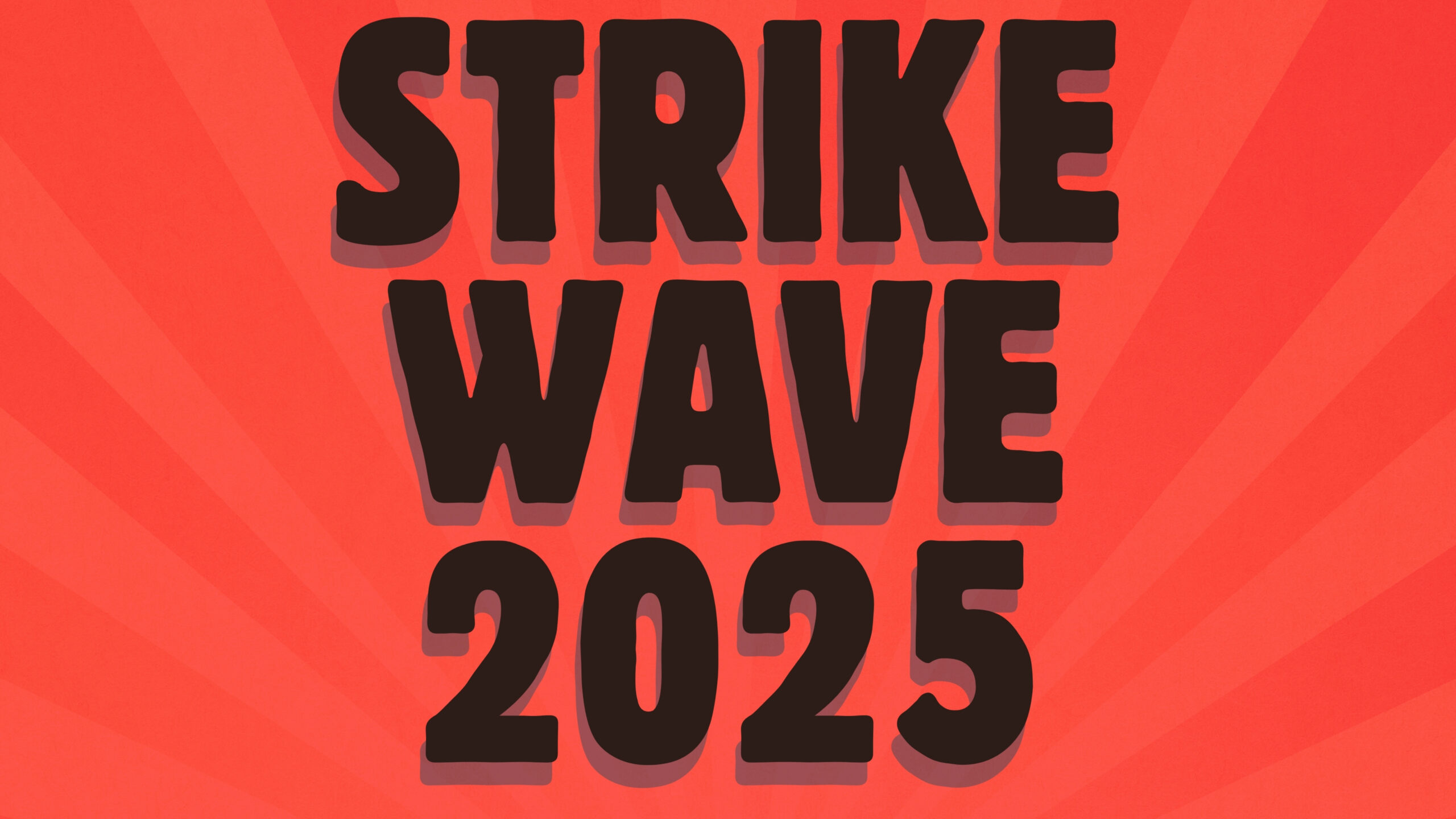Heralded by fire truck sirens and honks from passing cars, Te Whatu Ora nurses, midwives, healthcare assistants and kaimahi hauora from Hutt Hospital and Wellington Hospital walked off their shifts at 9am today, on 30 July. More than 200 boarded buses to Wellington Train Station where they were joined by striking healthcare workers from around Te Whanganui-a-Tara. The strikers were joined in solidarity by workers from the PSA, CTU, ASMS, and First Union, as well as teachers from the PPTA, NZEI, and TEU. A contingent of ISO members stood alongside them, all marching in solidarity on Te Whatu Ora’s head office to present their impact statements – representing more than 36,000 striking nurses across the country – and make their voices heard. And indeed, despite not having a megaphone, “The workers! United! Will never be defeated!” rang out along Molesworth Street.
The crowd of over 300, bristling with flags representing NZNO, the various unions, and Tino Rangatiratanga, gathered in the plaza before the Te Whatu Ora head office to demand better pay, safer staffing, and increased recruitment of new nurses. These demands represent the bare minimum for nurses who face the reality of Aotearoa’s healthcare funding crisis. According to the NZNO, 56 percent of all day shifts between January and November last year were understaffed. Nurses often have to work overtime, are usually pressured into taking on extra work, and feel guilty for not going above and beyond. Meanwhile, due to an overburdened health system, patients may wait up to 14 hours just to be seen. Māori and Pasifika in particular face poorer outcomes across the board.
This strike comes after almost a year of negotiations between NZNO and Te Whatu Ora for a new collective agreement and follows two lacklustre offers in May and June – in which several stipulations in the May offer were rescinded in the June offer. This bargaining is occurring amid a series of provocative attacks from the right-wing coalition government: a net cut to healthcare funding; the racist disestablishment of Te Aka Whai Ora and neglect of Hauora Māori; the theft of $12.8 billion intended for pay equity processes, as well as changes to the pay equity legislation that make any attempt to reconcile gender-based pay discrimination drastically more difficult. Te Whatu Ora’s offer in May 2025 does not cover increases to the cost of living, guarantee safe staffing, or include scope to hire more nurses. It is an offer that shows the government does not care about providing accessible and affordable health solutions for New Zealanders and intends to continue exploiting essential care workers.
“Remember what this government has done and what the next government has to do. We must hold the government accountable!” one of the speakers said. There was a sense that, while the government shamelessly intends to run the health system into the ground, striking nurses and healthcare professionals will fight them at every step of the way. “We are in this for the long haul and we are gonna stick it to them!” NZNO President, Anne Daniels said. NZNO plans to carry out a campaign of rolling strikes next month to continue putting pressure on Te Whatu Ora and the government.
One attendee said that the feeling on the ground was “powerful,” and that “there is a lot of pain in the nurses’ voices due to insufficient staffing.” This sentiment was echoed in the chants, “What do we want? Safe Staffing! When do we want it? NOW!”, the tongue-twisting “Hey, hey! Ho, ho! Short-staffed shifts have got to go!” and placards that read: “More nurses, less hearses.” Along with the support from firefighters, teachers, and the many unions joining in solidarity everywhere, these slogans were met with cheers from construction-site workers, the people walking in the street, and honks from passing cars and buses. It is clear the public recognises this struggle. “As nurses said, this is not just a workplace issue but a public health issue,” one participant said. This struggle for fair pay and safer staffing is the vanguard for a wider struggle against attacks on the working-class by the right-wing government. And the strong showing from the unions, and the public, hints at a working class that is organised to meet this attack.









